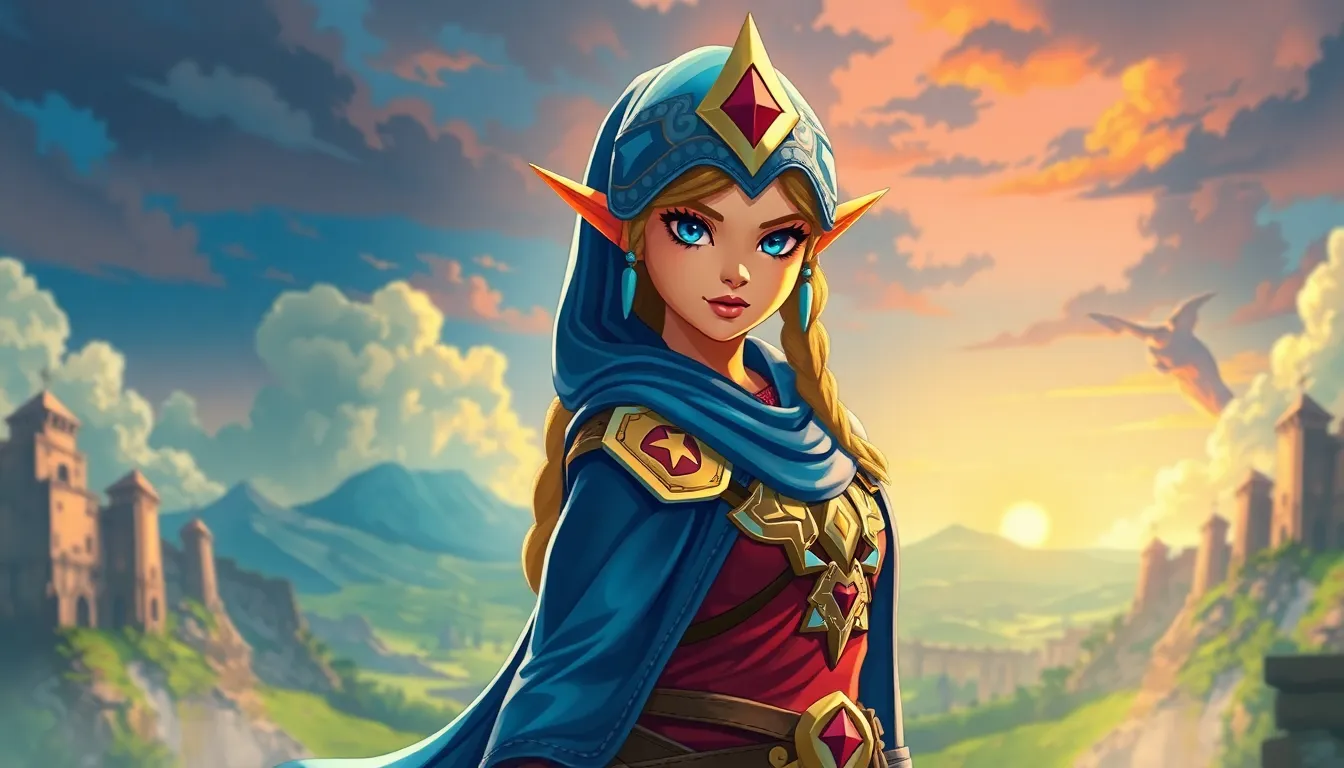Princess Zelda stands as one of the most iconic figures in video game history. First introduced in the legendary “The Legend of Zelda” series, she embodies the essence of courage, wisdom, and resilience. Over the years, Zelda has evolved from a damsel in distress to a powerful leader and warrior, captivating fans with her depth and complexity.
Her character not only drives the narrative of the games but also symbolizes hope and strength in the face of adversity. As players navigate the enchanting world of Hyrule, they encounter Zelda’s enduring legacy, which continues to inspire new generations. This exploration delves into her multifaceted character, her pivotal role in the series, and the impact she’s had on gaming culture.
Table of Contents
ToggleOverview of Princess Zelda
Princess Zelda represents a cornerstone of the “The Legend of Zelda” series, embodying various roles across the franchise’s timeline. Initially introduced as a princess in need of rescue, she quickly evolved into a formidable figure in her own right. Each iteration of Zelda showcases distinct abilities and personalities, ranging from a wise ruler to a fierce warrior.
Zelda often serves as the bearer of the Triforce of Wisdom, a powerful artifact symbolizing her intelligence and insight. This association with wisdom positions her as a critical character who guides the protagonist, Link, through challenges in Hyrule. Beyond her lineage, her character development illustrates themes of courage and resilience, inspiring players throughout her adventures.
Zelda’s depth extends beyond gameplay mechanics. In various storylines, she engages in battles, uses magic, and employs cunning strategy to overcome antagonists. Her presence consistently elevates the narrative stakes, illustrating that she is more than a damsel; she plays a pivotal role in the realm’s survival.
The increased focus on her character arc showcases her growth and complexity, aligning her with contemporary narratives that celebrate strong female protagonists. Through her extensive representation in video games, comics, and animated adaptations, Princess Zelda stands as an iconic figure, influencing both her peers and the gaming community alike.
Character Evolution

Princess Zelda’s character evolution spans multiple games, with each iteration reflecting growth in narrative depth and complexity.
Early Appearances
In early appearances, Zelda primarily embodies the archetype of the damsel in distress. Her role in “The Legend of Zelda” (1986) defines the series, showcasing her as a captured princess awaiting rescue. Despite her limited agency, she introduces key elements of the narrative through her lineage and the Triforce. Subsequent games, such as “Zelda II: The Adventure of Link,” present her as a guiding spirit, further emphasizing her importance in the overarching storyline. While her characterization in earlier titles leans toward traditional tropes of femininity, pivotal moments hint at her potential for strength and wisdom.
Modern Interpretations
Modern interpretations of Zelda highlight her as a dynamic leader and warrior. In “The Legend of Zelda: Ocarina of Time,” she transitions from a sheltered princess to the formidable Sheik, demonstrating combat prowess and strategic acumen. In “Breath of the Wild,” Zelda embodies intellect and resilience, actively working to thwart the calamity threatening Hyrule. This portrayal emphasizes her role as an equal partner to Link, showcasing her adaptability and agency. Recent iterations position her as an essential character driving the narrative forward, reflecting a broader trend in video games toward complex, empowered female protagonists.
Role in The Legend of Zelda Series
Princess Zelda plays a pivotal role in “The Legend of Zelda” series, influencing gameplay and narrative across multiple installments. Her character embodies the essence of wisdom and courage, guiding both protagonists and players throughout their journeys.
Gameplay Contribution
Zelda significantly enhances gameplay mechanics throughout the series. Players encounter her in various forms, each contributing unique abilities. In “Ocarina of Time,” she transforms into Sheik, equipping Link with stealth skills and supporting him through critical battles. In “Breath of the Wild,” she employs ancient technology to aid Link from a distance, showcasing her intelligence and resourcefulness. Her role as a magical healer and strategist further enriches the combat experience, compelling players to adapt their tactics based on her contributions. Players often rely on her guidance to solve puzzles and navigate challenges, strengthening the connection between Zelda and the gameplay dynamics.
Narrative Significance
Zelda’s narrative significance is profound, anchoring many story arcs within the franchise. Initially portrayed as the damsel in distress, she gradually evolves into a powerful leader. Her lineage and connection to the Triforce of Wisdom imbue her with depth and gravitas. In titles like “Phantom Hourglass” and “Spirit Tracks,” her transformation into a wise ruler emphasizes themes of responsibility and sacrifice. Such developments highlight her as a driving force in the fight against evil, often catalyzing change within Hyrule. Her multifaceted character not only propels the plot but also symbolizes resilience and hope, transforming her from a mere supporting character into a central figure shaping the series’ legacy.
Cultural Impact
Princess Zelda has made a significant cultural impact within the gaming industry and beyond, generating a dedicated fan base and influencing various forms of media.
Fan Base and Community
Zelda’s character stirs passion among gamers, fostering a vibrant community. Fans engage in discussions, share fan art, and create in-depth analyses of her role in the series. Online platforms host forums where communities brainstorm theories about her character arc and future potential. Events like conventions showcase cosplays and fan-made projects, further solidifying her status in pop culture. Community-driven projects often explore the themes of empowerment and resilience that Zelda embodies, enhancing her appeal to diverse audiences.
Merchandise and Media
Princess Zelda’s influence extends into merchandise and various media. The franchise generates a wide range of products, from action figures to clothing, highlighting her iconic imagery. The character appears in animated adaptations, comics, and novels, expanding her narrative beyond video games. Collaborations with global brands feature Zelda in crossover events and themed merchandise, reinforcing her cultural relevance. Notable titles like “Hyrule Warriors” and spin-off games display her versatility, introducing new audiences to her character while preserving her core traits.
Princess Zelda’s journey through the “Legend of Zelda” series is a testament to her enduring legacy in gaming. From her initial portrayal as a damsel in distress to her emergence as a powerful leader and warrior, she embodies resilience and wisdom. Her character not only drives the narrative but also inspires players to embrace courage in their own adventures.
Zelda’s influence extends beyond gameplay, shaping cultural perceptions of female characters in video games. As she continues to evolve, her impact resonates with fans old and new, ensuring her place as an iconic figure in both gaming and pop culture. The legacy of Princess Zelda will undoubtedly influence future generations, solidifying her status as a symbol of hope and strength.




